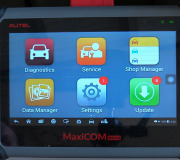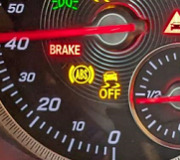You have to manually bleed the system very well, then you need the scan tool to run the automated bleed procedure on the ABS unit.
Use the two-person bleed procedure under the following conditions:
Installing a new Electro-Hydraulic Control Unit (EHCU) or new Brake Pressure Modulator Valve (BPMV)
Air is trapped in the valve body
Do not drive the vehicle until the brake pedal feels firm.
Do not reuse brake fluid that is used during bleeding.
Use the vacuum, the pressure and the gravity bleeding procedures only for base brake bleeding.
Raise the vehicle in order to access the system bleed screws.
Bleed the system at the right rear wheel first.
Install a clear hose on the bleed screw.
Immerse the opposite end of the hose into a container partially filled with clean DOT 3 brake fluid.
Open the bleed screw 1/2 to one full turn.
Slowly depress the brake pedal. While the pedal is depressed to its full extent, tighten the bleed screw.
Release the brake pedal and wait ten to fifteen seconds for the master cylinder pistons to return to the home position.
Repeat the previous steps for the remaining wheels. The brake fluid which is present at each bleed screw should be clean and free of air.
This procedure may use more than a pint of fluid per wheel. Check the master cylinder fluid level every four to six strokes of the brake pedal in order to avoid running the system dry.
Press the brake pedal firmly and run the Scan Tool Automated Bleed Procedure.
Release the brake pedal between each test.
Bleed all four wheels again using Steps 3-9. This will remove the remaining air from the brake system.
Evaluate the feel of the brake pedal before attempting to drive the vehicle.
Bleed the system as many times as necessary in order to obtain the appropriate feel of the pedal.
Thursday, March 11th, 2021 AT 1:25 PM


